
Some of the links in this post may be affiliate links.
If you want an easy orchid to grow and want to graduate from solely growing moth orchids (Phalaenopsis), Brassavola nodosa is a great orchid to learn how to grow next. It’s hard to beat their beautifully scented flowers, ease of care, and the fact that they can bloom more than once a year.
Keep reading to learn how to take care of these beauties.
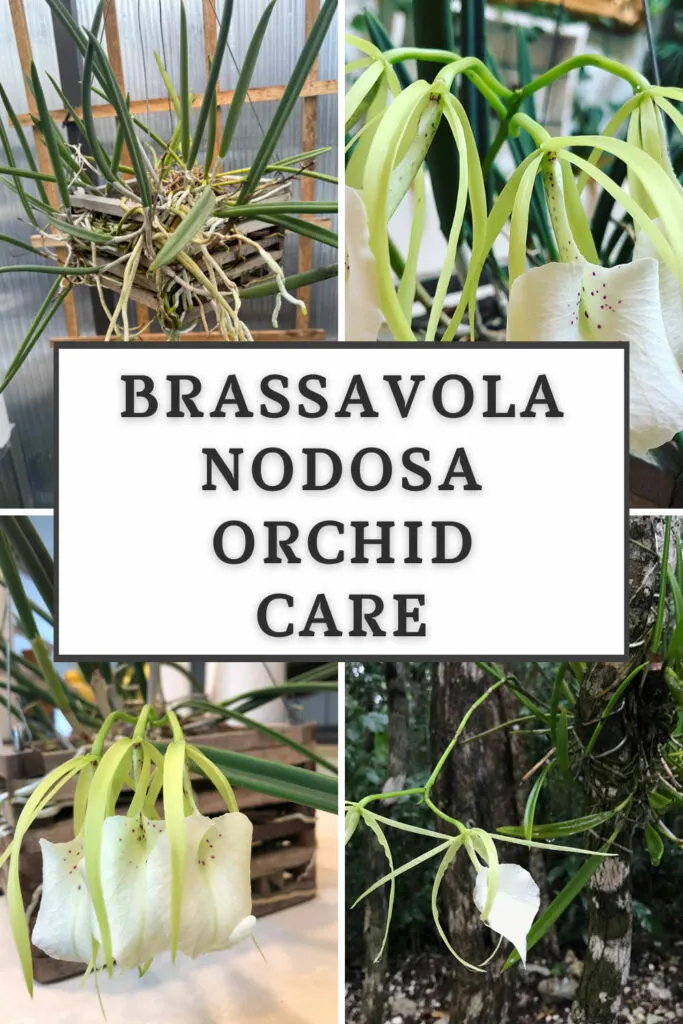
BRASSAVOLA NODOSA ORCHID CARE
Brassavola nodosa also goes by the common name “lady of the night orchid” because of the intoxicating fragrance that the white flowers exude in the evening hours. In fact, the flowers are so fragrant that you can often smell them from another room!
The Brassavola genus contains about 21 orchid species, but B. nodosa is is probably the most commonly grown. The natural habitat of Brassavola nodosa includes part of Mexico, much of Central America, and parts of northern South America.
If you’ve grown Cattleya orchids, these plants like very similar care.
1. What kind of light?
Brassavola orchids need quite bright light in order to grow well and bloom. Indoors, some direct sunlight is a must. A south-facing window (if you live in the northern hemisphere), would be best, as this exposure receives the most sunlight.
If you live in the southern hemisphere, the best window would be a northern-facing window. And regardless of where you live, they will also grow and bloom well right in front of an unobstructed eastern-facing or western-facing windows.
If you see slight reddish marks on the leaves, this is not a bad thing. It just means that your plant is at the maximum end of its light tolerance before it starts to burn.
If the leaves are super deep green and your plant hasn’t flowered at all in at least a year, your plant is not getting enough light so it’s time to move it to a brighter location.
If you don’t have any suitably bright windows, they will also grow well under a full spectrum grow light. I’ve grown and bloomed mine easily under grow lights, before I moved the plant over to my greenhouse where it lives now.
In the summer months, you may want to place your plants outdoors in the shade. The time outdoors will really benefit your plant. The rain water, air circulation, light conditions, and natural drop in temperature during the evening really work wonders for your plant.
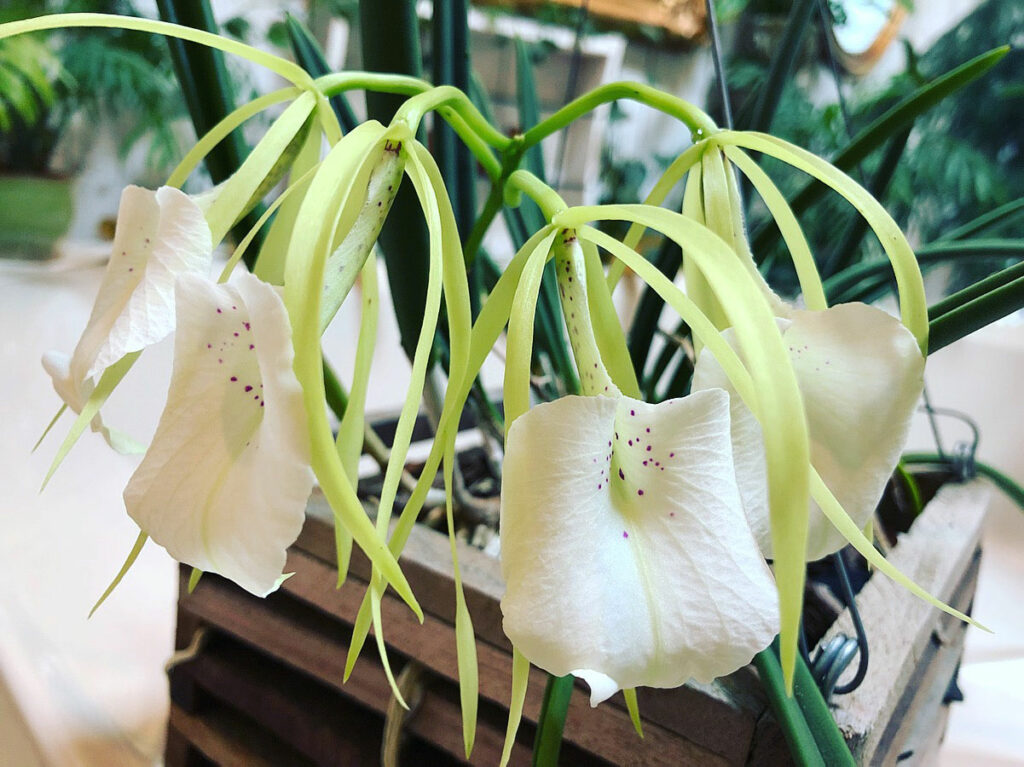
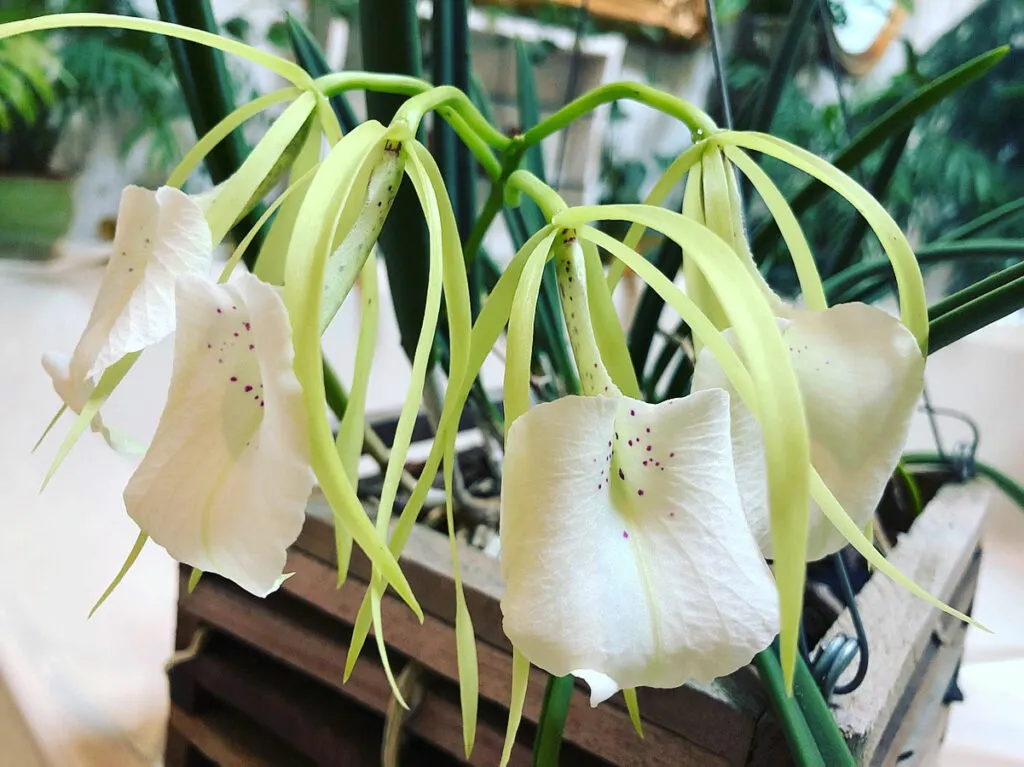
2. How do you water them?
Frequency of watering
Depending on how you have your plant growing, the frequency of watering will vary pretty drastically. I’ll go over some tips for mounted orchids, ones growing in an orchid basket, and ones growing in pots.
Mounted orchids will need watering daily for best results. The exposed roots will need very regular watering to prevent them from drying up too much. And in very warm temperatures, watering them even twice daily is not too much! If you are looking for low maintenance, I would recommend not buying any mounted orchids.
I grow my own plant in a wooden vanda basket. The open structure of the basket won’t dry out as quickly as a mounted plant, but will dry out more quickly than a plant in a pot. I now have the plant below in my greenhouse and I will water it 2-3 times per week.
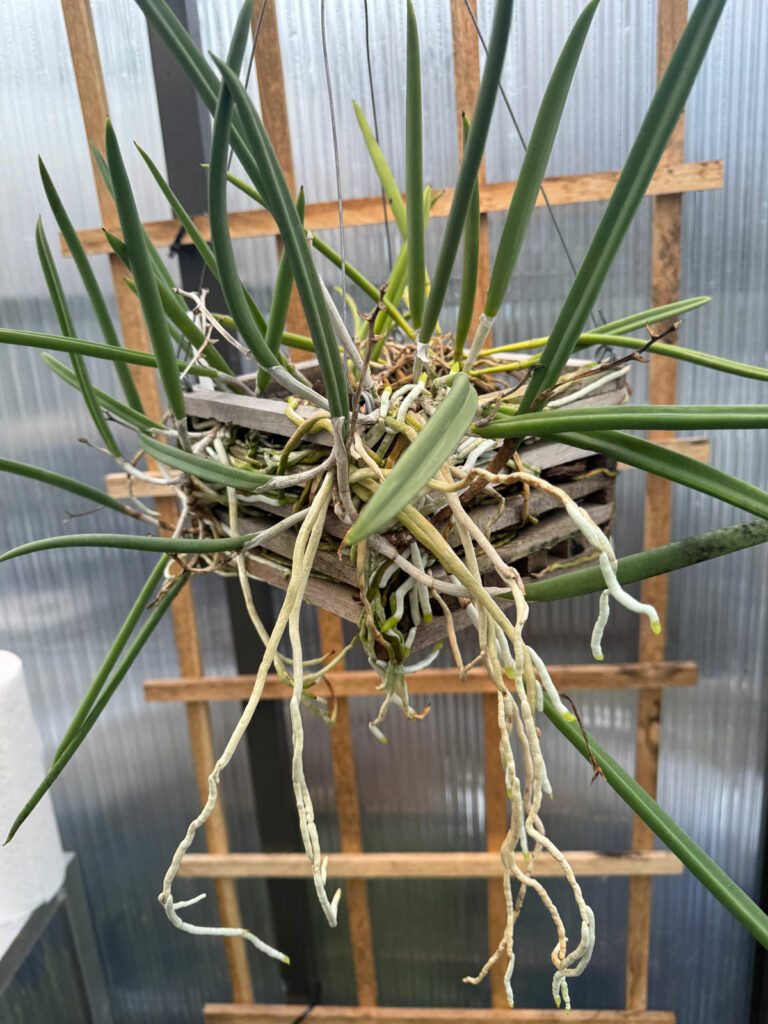
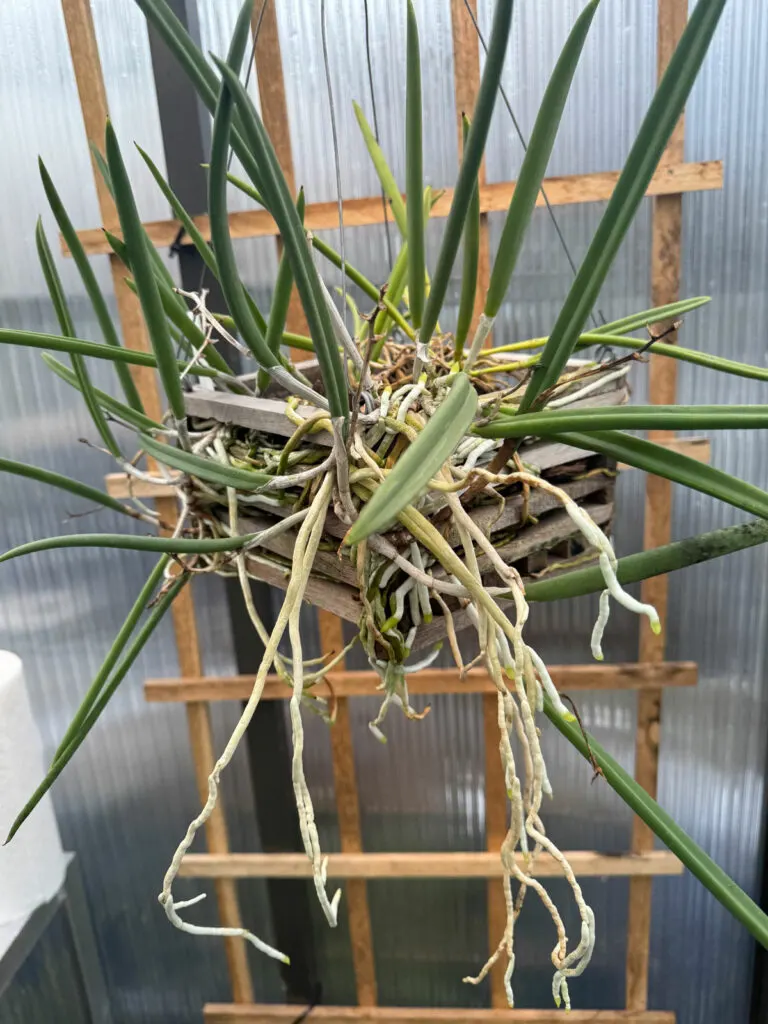
Lastly, you can of course grow your plant in a plain pot. Clay pots work well, but plastic pots are also fine. Clay pots will dry out much faster than other types.
The plump, succulent leaves can withstand some drought, but you want to try and avoid letting your bark mix get so dry that the leaves are no longer firm and plump. If the leaves and roots look a little wrinkled, you’ll have to increase your frequency of watering.
You’ll want your potting mix to almost dry out completely (just feel it with your finger) and then thoroughly soak your plant.
You can keep your plant drier during the winter time when there isn’t as much light, temperatures are cooler, and your plant isn’t growing. Come Springtime and throughout the growing season, when new growth starts back up and your plant is actively growing, keep your plant a little more moist.
You should start to see both new roots and new leaves growing starting in late winter to early spring usually.
Type of water to use
Rain water is definitely best for orchids, but you can use tap water. These are pretty forgiving plants. If your orchid collection grows, you may want to invest in a reverse osmosis (RO) water system for your plants.
If you do use RO water, it is important to fertilize very regularly so that your plants get enough nutrients.
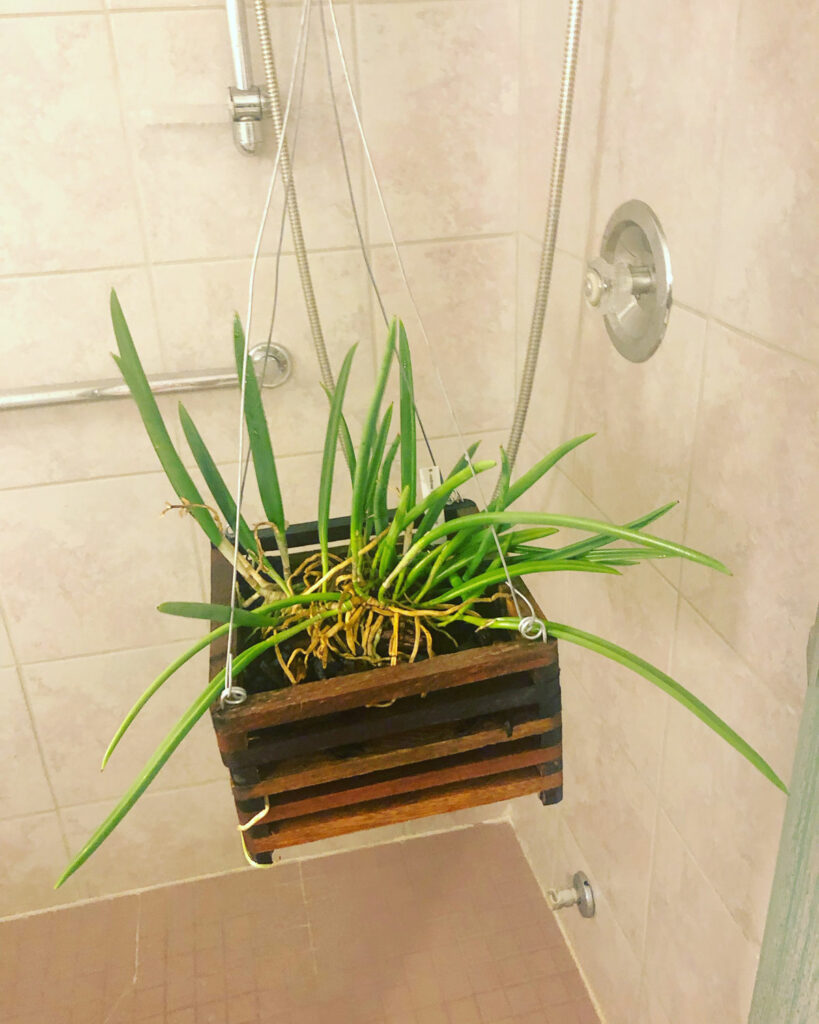
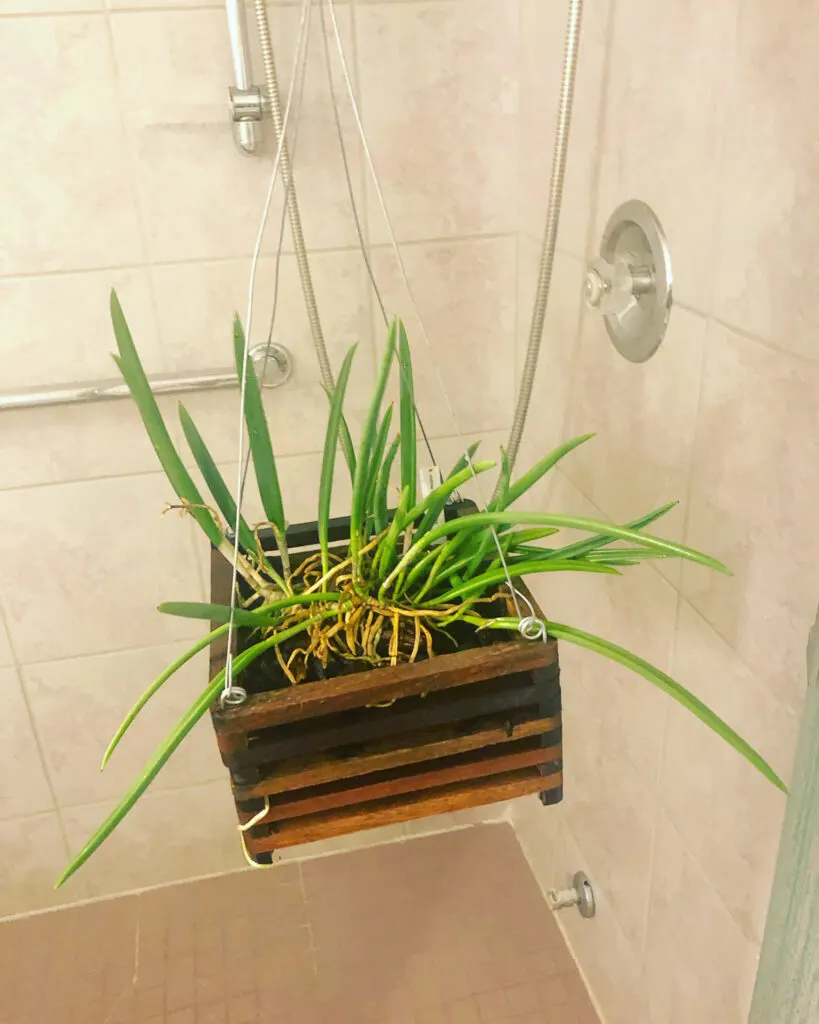
3. How to fertilize?
I’d recommend using a weak fertilizer solution with every watering. Any good balanced fertilizer will work, but I love using Dyna-Gro Grow for all my orchids.
I try and water with 1/4 teaspoon of this fertilizer per gallon of water with every watering. Once a month or so, water with plain water in order to flush out any built up fertilizer salts.
4. What is the best growing medium?
These plants are epiphytes and need a very chunky growing medium so do not use potting soil. The best growing medium for these plants is a medium to coarse fir bark (pine bark) mix. Many premade mixes for orchids will contain fir bark, lava rock, horticultural charcoal, and even large perlite.
You can also add in a little bit of sphagnum moss to help keep the mix from drying out too quickly.
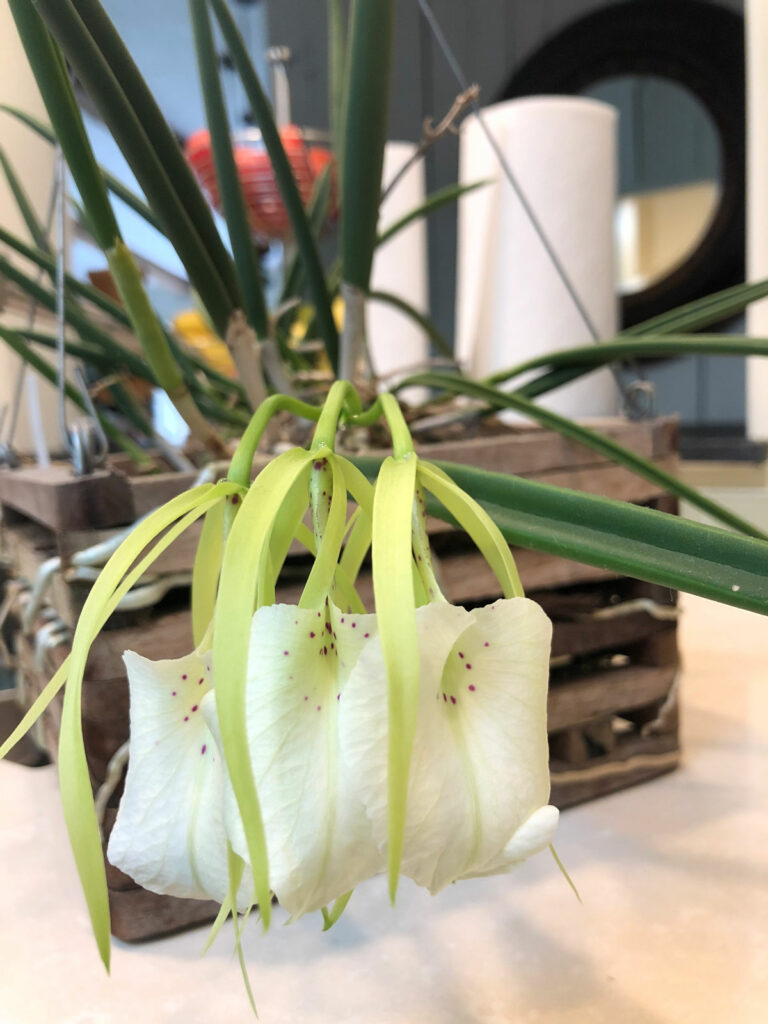
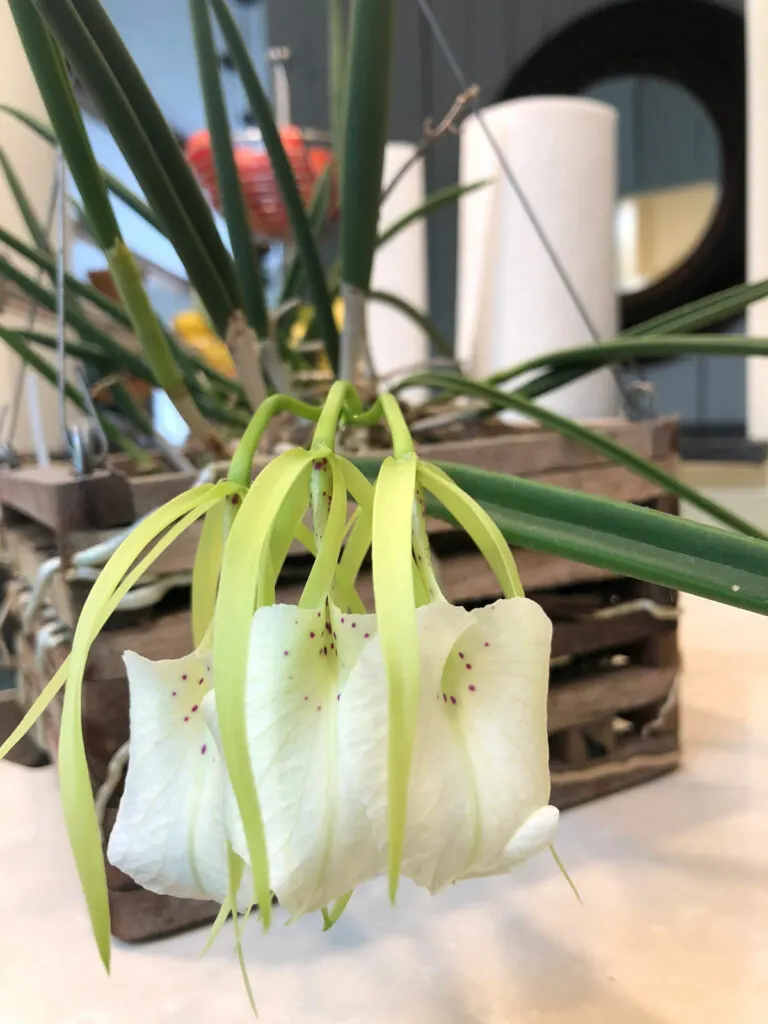
5. When do they bloom?
A healthy Brassavola nodosa can bloom multiple times a year. Mine usually blooms in Fall and Winter, and sometimes even in the summertime. Flower spikes will have anywhere from 1 to even 4 or 5 flowers in each cluster.
6. Best temperature range?
These plants do best with daytime temperatures in the 65-80°F. If you go below a minimum temperature of about 55°F, your plant may not flower for you.
7. Humidity requirements?
The nice part about these epiphytic orchids is that they will tolerate low humidity levels that are found in a typical home. It is better if you can maintain around 50% relative humidity, but it’s not a requirement. They are pretty low fuss orchids when it comes to humidity.
If you are growing your plant in a high humidity environment, make sure that you have good air circulation in order to help avoid any fungal diseases from emerging.
I hope you’ve enjoyed this post on Brassavola nodosa orchid care. Brassavola nodosa truly is one of the easiest orchids you can grow indoors. With proper care, your plant should bloom happily at least once a year, if not more.







I’ve been browsing online more than three hours these days, yet I never found any attention-grabbing article like
yours. It’s lovely value sufficient for me.
In my view, if all webmasters and bloggers made good content as you did, the
internet shall be a lot more useful than ever before.